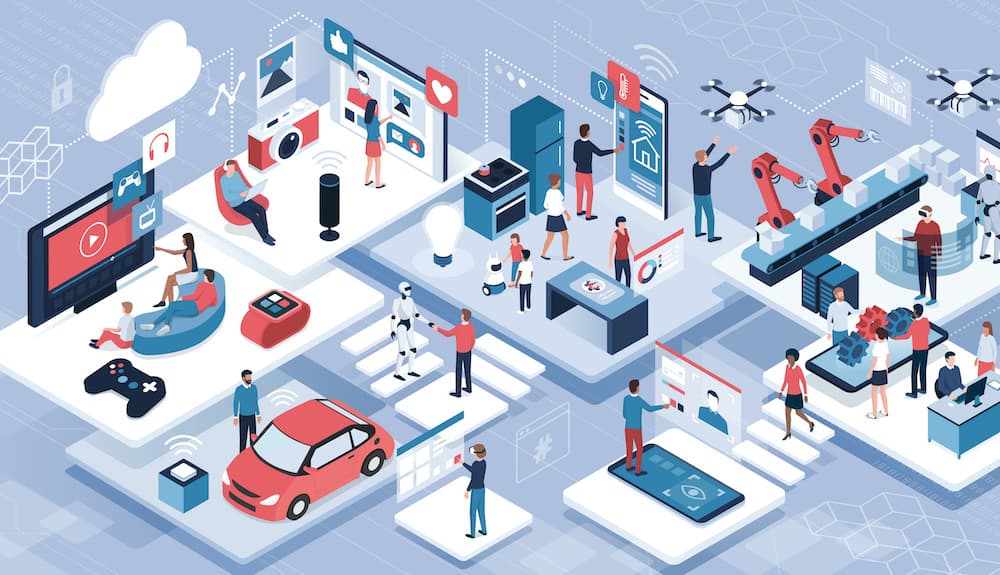
The NHS has experienced pressure from a variety of angles over the past two years. With an aging population, an increasing backlog of maintenance and a global pandemic to manage, the NHS are serving their patients through the hard work of nurses, doctors and administrative staff.
Healthcare estates and facility managers also play a vital role to ensure hospital buildings and equipment are operating correctly, to provide quality care and ensure the safety of patients and staff.
The coronavirus pandemic is exacerbating the challenges healthcare facilities already face and has emphasised the issue of aging infrastructure, with almost 7,000 clinical incidents caused by estates failure reported across NHS England trusts in the 2020/21 ERIC data. Some of the challenges caused by hospital infrastructure can and are being addressed by the power of IoT-enabled platforms and solutions.
In recent years, organisations across multiple industries have harnessed Internet of Things (IoT) to transform their buildings and infrastructure. For example, in the industrial manufacturing sector with their smart factory solutions. Yet in healthcare – the sector that can harness these capabilities to the benefit of millions of people – IoT adoption and understanding is lagging far behind other sectors.
The chief reason for healthcare’s slow adoption of IoT has often been painted as a regulatory one, but according to Guidehouse Insights’ latest research report, Global Insights: IoT & the Future of Healthcare, commissioned by Schneider Electric, perceived cost is just as significant a barrier.
The research report includes real-world insights from 600 global healthcare facility executives into IoT investment priorities, and found that 50% of hospital executives that do not plan to implement IoT over the next 12 months cite payback or ROI as the primary barrier to adoption.
This is regrettable, but also understandable. In addition to the human toll, the skyrocketing demand for care during Covid-19 also incurs a major financial burden on already-stretched medical services. But the true question is not whether healthcare providers have the funding to implement IoT: it’s whether they can afford to ignore its potential.
What the IoT looks like in healthcare
The IoT centres around connectivity, as networks of internet-accessible devices are equipped with software and firmware that collects, stores, and transmits data to other connected devices to enable data-driven decision-making and automate manual and inefficient processes.
IoT-based building management platforms add value to existing intelligent building technologies by delivering new visibility into healthcare facility performance to improve operational efficiency and resiliency while advancing patient care and sustainability targets.
In their research report, Guidehouse Insights defines IoT devices as having:
- Two-way data communication enabling them to send and receive data.
- Embedded control and computation capabilities, which allow for advanced integration into other management, automation, or control systems.
The benefits offered by the IoT are facility-wide
Improving energy efficiency is often the way IoT-enabled technologies make their entrance into healthcare facility buildings. And the advantages IoT-based platforms offer in this regard are significant and far-reaching.
At a practical level, IoT-powered intelligent patient room technology can:
- Give patients better control over environmental preferences, such as lighting and temperature.
- Provide easier access to care information like upcoming consults, release dates, and provider teams.
- Help healthcare organisations create healing environments that are more responsive to both patients and staff.
IoT-based platforms also help improve the resilience of healthcare facilities. IoT-enabled asset management and predictive maintenance systems keep facilities personnel up to date on equipment conditions and can help troubleshoot problems to ensure the 24/7 continuity patients depend upon.
Integrating this new technology into existing building energy management systems can also support an organisation’s sustainability goals. The growth of enterprise-level environmental, social, and governance (ESG) programs across all industries, including healthcare, is driving demand for IoT solutions.
Guidehouse Insights found that 72% of the responding organisations that have set sustainability targets have incorporated IoT systems into their facilities in the past 12 months, compared to 1% of those that have not set such targets.
Meeting budget challenges
Guidehouse Insights’ new research report also highlights how IoT-enabled platforms and solutions can help facility managers create hyper-efficient, people-centric, resilient, and sustainable healthcare facilities of the future.
Concerns regarding potential savings and the resulting return on the investment were the top two barriers’ respondents said they faced in making the decision to install IoT solutions in their facilities. However, it’s important to emphasise the potential that an open, integrated IoT platform can offer beyond operational savings to transform patient and staff experience within the facility, boost resilience, and address ESG directives.
Taking a holistic approach that considers both the current state of the facility and where it should be in the future is key for any successful IoT implementation. This process would include the full range of efficiency savings, patient and staff experience improvements, resiliency requirements, and ESG goals that facility executives hope to address.
Schneider Electric is the company behind the EcoStruxure for Healthcare IoT platform.





